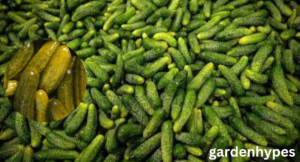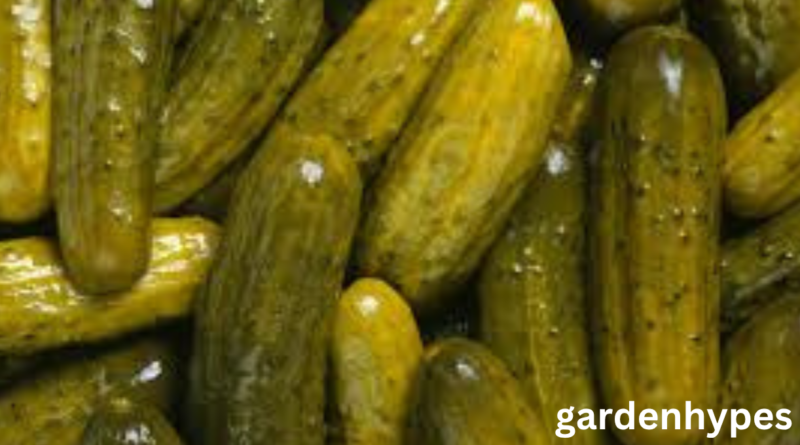The Great Pickle Shortage What’s Really Going On
In recent months, grocery store shelves have been missing a tangy staple—pickles. From spicy spears to classic dills, jars are disappearing faster than they’re being restocked. So what’s the real deal behind this so-called pickle shortage? It’s not just a minor blip in the snack aisle; it’s a complex storm of agricultural, economic, environmental, and social factors colliding. And yes, it’s hitting harder than you’d think.
Pickles might not seem like an essential item—until you go to build the perfect sandwich or crave that salty crunch with your burger. Suddenly, their absence feels personal. This blog dives deep into the roots of the pickle shortage, exploring not just why it’s happening, but how it’s affecting our food habits, our businesses, and our culture.
So if you’ve been frantically searching for your favorite jar, or wondering why your local deli stopped including that sour sidekick, you’re not alone. Let’s break down the pickle panic, one crunch at a time.
click in link prickly shortage
Understanding the Pickle Craze
Why Pickles Became So Popular
In a world of evolving taste trends, pickles have carved out a unique and oddly addictive niche. They’re not just condiments anymore—they’re cultural icons. TikTok has played a major role in this, with creators using pickles in everything from bizarre food combinations to “pickle juice challenges.” And let’s be honest, there’s something oddly satisfying about biting into something so intensely flavorful and crunchy.
Health trends also gave pickles a boost. They’re low in calories, packed with flavor, and boast probiotics if they’re naturally fermented. Athletes and fitness buffs even drink pickle juice for its supposed muscle-cramp-fighting properties. As demand soared, companies scrambled to innovate—think pickle-flavored popcorn, pickled chips, pickle-flavored soda (yes, really), and even pickle ice pops.
This cultural obsession with pickles transformed them from a humble pantry item to a must-have product, fueling higher demand than ever before. When demand outpaces supply, problems are bound to pop up—and that’s exactly what we’re seeing now.
From Trend to Necessity: The Cultural Importance of Pickles
Pickles aren’t just a quirky food trend—they hold deep cultural roots around the world. In the U.S., dill pickles are a deli classic. In Korea, kimchi reigns supreme. In India, achar (spicy pickled vegetables) is served with nearly every meal. Countries have used pickling as a preservation technique for centuries, giving rise to an endless variety of regional specialties.
So when pickles become scarce, it’s more than just a consumer inconvenience—it’s a cultural disruption. Local delis, ethnic restaurants, and family recipes all rely on a steady supply of pickled products. This shortage is impacting not just what people eat, but how they connect with tradition and heritage through food.
That emotional tie is part of what makes this shortage feel so intense. We’re not just missing a snack; we’re missing a piece of comfort, a flavor of home, and for many, a taste of identity.
What’s Causing the Pickle Shortage?
Climate Change and Cucumber Crops
At the root of every pickle is a cucumber—and cucumber crops are in trouble. In recent years, farmers have battled unpredictable weather patterns. Heatwaves, flooding, and droughts have taken a toll on cucumber yields, particularly in major growing regions like California, Florida, and Mexico.
Cucumbers are sensitive to extreme heat and require consistent water. With shrinking water supplies and harsher climates, crop yields have suffered dramatically. Some farms have reported reductions of over 30% compared to previous years. Less cucumber supply means fewer pickles get made—it’s that simple.
click in link prickly shortage
And it’s not just the U.S. facing these issues. Global cucumber production is struggling, too. In Europe and Asia, similar weather problems have disrupted agriculture, compounding the problem worldwide. When a core ingredient becomes scarce, it throws the entire pickle production pipeline into chaos.
Supply Chain Woes and Transportation Issues
Even if cucumbers make it out of the fields, getting them to the pickle factories isn’t as easy as it used to be. The global supply chain is still recovering from pandemic-era disruptions, and the food industry has felt this deeply. Shipping delays, fuel price hikes, and container shortages all slow down delivery times and raise costs.
click in link prickly shortage

Add in transportation bottlenecks at ports, and suddenly pickles aren’t getting where they need to go. Plus, glass jars—the very containers used to store pickles—are also in short supply due to raw material shortages and increased demand for food storage products during lockdowns.
These issues combine to make it more expensive and time-consuming to produce a simple jar of pickles. For producers, some batches aren’t worth the cost anymore. For retailers, fewer shipments mean emptier shelves.
Labor Shortages in Agriculture and Food Processing
Another huge factor? Labor shortages. Farming cucumbers, harvesting them, and processing them into pickles is labor-intensive. And unfortunately, the agriculture and food processing industries have faced significant workforce gaps post-pandemic.
With fewer workers available to plant, harvest, process, and package cucumbers, delays become inevitable. Smaller companies—especially artisanal or family-owned pickle makers—are hit hardest. They don’t have the resources to automate production like big corporations do, and many have had to scale back or shut down temporarily.
This human element is critical. Without enough hands to do the work, the whole system slows down—resulting in fewer pickles on the market and higher prices for consumers.
FAQs
1. Why is there a pickle shortage in 2025?
The pickle shortage is primarily due to a combination of climate change affecting cucumber crops, labor shortages in the agricultural and food processing sectors, and ongoing global supply chain disruptions. These factors have reduced both the production and availability of pickles in stores and restaurants.
2. Are cucumbers also in short supply?
Yes, cucumbers—the main ingredient in pickles—are facing shortages due to poor crop yields caused by extreme weather events like droughts and heatwaves. Reduced cucumber availability directly impacts pickle production across the globe.
3. How long is the pickle shortage expected to last?
While it’s hard to predict an exact timeline, industry experts suggest that the shortage could persist through late 2025 unless favorable weather conditions return, labor forces stabilize, and supply chains improve. Some recovery may begin by early 2026 if interventions are made.
4. Can I make pickles at home easily?
Absolutely! Homemade pickling is surprisingly simple and allows you to customize flavors. You just need fresh cucumbers, vinegar, salt, water, and spices. Many people are turning to DIY pickling during the shortage to satisfy their cravings and reduce reliance on store-bought jars.
5. What are the best pickle substitutes?
If you can’t find pickles, try other tangy or fermented foods like kimchi, sauerkraut, pickled onions, or giardiniera. These options still provide that sour kick and are great with sandwiches, burgers, or as snacks on their own.
